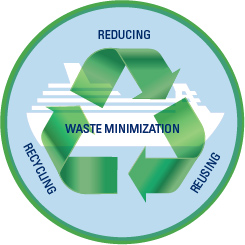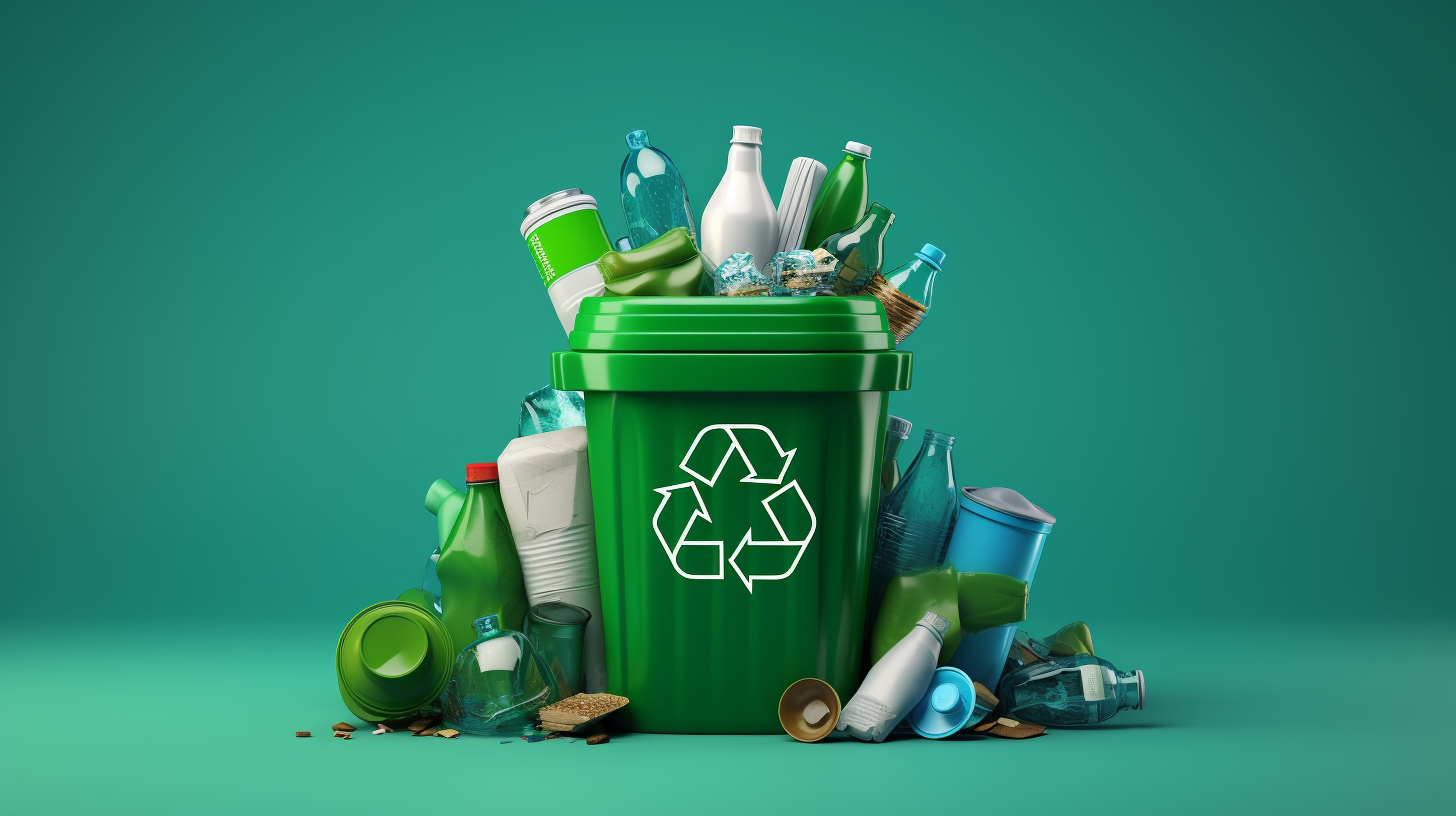Exactly How Recycling Lives Services Help Reduce Environmental Footprints
Wiki Article
Exploring Various Sorts Of Waste in Modern Waste Monitoring Systems
The contemporary landscape of waste administration involves browsing a complicated range of waste types, each requiring specialized handling and disposal methods to alleviate environmental influences. Municipal solid waste, dangerous waste, digital waste, and natural waste each present unique challenges and opportunities for source healing.Metropolitan Solid Waste
Local strong waste, often described as household garbage or rubbish, includes a selection of discarded products generated by household, industrial, and institutional resources within a municipality. This waste stream generally consists of items such as product packaging, food scraps, lawn trimmings, paper, plastics, fabrics, and disposed of household items. The administration of municipal strong waste is a crucial component of urban preparation and public health and wellness, requiring reliable collection, transport, and disposal systems.Efficient waste management systems are made to minimize ecological effect while taking full advantage of resource recovery. Composting organic waste, such as food scraps and lawn trimmings, not only reduces landfill use yet likewise creates valuable soil changes.
Districts need to likewise address the economic and logistical challenges associated with waste administration. Executing pay-as-you-throw systems, boosting public awareness, and investing in innovation can substantially improve waste diversion rates. By integrating these methods, municipalities can promote sustainable communities, reduce greenhouse gas emissions, and conserve all-natural sources.
Hazardous Waste

Effective dangerous waste monitoring entails numerous crucial actions: identification, segregation, treatment, and disposal. Recognition involves the category of waste based upon its hazardous properties. Segregation makes certain that hazardous products are kept separately from non-hazardous waste to prevent cross-contamination. Treatment methods, such as chemical neutralization, incineration, and stablizing, are employed to decrease the toxicity, volume, or mobility of the waste. Lastly, disposal options, including secure landfills and below ground storage space, are chosen to make sure long-term containment.
Regulatory frameworks, such as the Source Conservation and Recuperation Act (RCRA) in the USA, give guidelines and requirements for contaminated materials management. Adherence to these laws, coupled with advancements in waste therapy innovations, is important in reducing the risks connected with dangerous waste.
Digital Waste
Digital waste, typically described as e-waste, represents a rapidly growing obstacle in waste monitoring systems internationally. This sort of waste incorporates disposed of electronic tools and devices such as smartphones, computer systems, tvs, and other digital devices. The fast pace of technological improvement, combined with reducing item life-spans and consumer need for the current gadgets, has actually significantly raised the volume of e-waste generated every year.E-waste is particularly troublesome because of its complicated composition, frequently consisting of hazardous compounds like lead, cadmium, and mercury, which posture substantial environmental and wellness dangers otherwise properly handled. On the other hand, e-waste also consists of useful materials such as silver, gold, and copper, which can be recuperated and recycled. The dual nature of e-waste-- both harmful and important-- requires customized handling, recycling, and disposal procedures.
Effective e-waste administration includes like it stringent regulatory frameworks, robust collection systems, and advanced reusing technologies. Public understanding and involvement are important, as incorrect disposal methods, such as illegal discarding and informal recycling, worsen ecological contamination and carcinogen. Boosting e-waste administration practices is crucial for mitigating environmental impact and recovering valuable sources in a progressively electronic world.

Organic Waste
Organic waste, consisting of kitchen scraps, lawn trimmings, and farming residues, stands for a substantial section of the global waste stream. This kind of waste is biodegradable, indicating it can be broken down by bacteria right into easier organic substances. In spite best site of its possibility for all-natural disintegration, improper management of organic waste can cause negative environmental influences, including the exhaust of greenhouse gases such as methane, which contribute to climate adjustment.Efficient monitoring of organic waste is important for lessening these ecological impacts (recycling lives services). Composting is a commonly embraced technique, changing organic waste into nutrient-rich compost that can boost soil health and wellness and farming performance. Furthermore, anaerobic food digestion is an arising technology that converts natural waste right into biogas, a renewable resource source, and digestate, which can be made use of as plant food
Municipalities and waste management entities need to apply robust organic waste collection and therapy programs to make the most of the benefits of these processes. Public education campaigns can additionally play an essential function in encouraging houses and services to different natural waste from other sorts of waste. By focusing on the management of organic waste, cultures can minimize garbage dump usage, reduced greenhouse gas exhausts, and produce important results for farming usage.

Innovative Waste Administration
In the realm of waste management, ingenious methods are changing exactly how societies manage their refuse, intending for sustainability and performance. These improvements incorporate an array of technologies and methods that enhance reusing prices, minimize garbage dump dependence, and lower ecological influence. One popular development is the execution of smart waste containers furnished with sensors that check fill levels and enhance collection paths. This not just reduces fuel consumption yet also lessens greenhouse gas exhausts.
An her explanation additional significant development is the adoption of waste-to-energy (WtE) innovations. By transforming non-recyclable waste into functional power through procedures such as incineration and anaerobic food digestion, WtE lowers land fill burden and provides an eco-friendly power source. Advancements in chemical recycling permit for the break down of complicated plastics right into their initial monomers, allowing the production of new, top notch plastic products.
In addition, the round economic climate model is gaining grip, stressing the layout of products and systems that focus on reusability and resource effectiveness. This holistic approach urges industries to decrease waste generation from the beginning. With these innovative approaches, contemporary waste administration systems are not just attending to the instant obstacles of waste disposal however likewise leading the method for an extra lasting future.
Final Thought
A thorough understanding of municipal strong waste, hazardous waste, digital waste, and natural waste, coupled with the application of ingenious waste management solutions, is imperative for minimizing ecological influences. Incorporating modern technologies such as wise waste containers and waste-to-energy systems can enhance performance and sustainability. Efficient waste management strategies not only foster source healing however additionally promote public awareness and participation, inevitably adding to the advancement of a round economic climate.The contemporary landscape of waste administration involves navigating an intricate array of waste types, each needing specialized handling and disposal methods to reduce environmental impacts. Metropolitan solid waste, dangerous waste, electronic waste, and organic waste each existing distinctive obstacles and possibilities for resource recovery.Electronic waste, generally referred to as e-waste, stands for a quickly expanding challenge in waste management systems around the world. With these ingenious techniques, modern-day waste management systems are not only resolving the prompt obstacles of waste disposal yet likewise paving the way for a more sustainable future.
A thorough understanding of community solid waste, harmful waste, electronic waste, and natural waste, coupled with the application of ingenious waste monitoring remedies, is vital for alleviating environmental impacts. (recycling lives services)
Report this wiki page